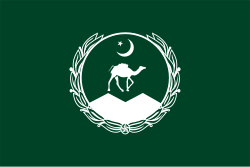トップQs
タイムライン
チャット
視点
バローチ人
ウィキペディアから
Remove ads
バローチ人(バローチじん、英語: Baloch, バローチー語: بلوچ, ローマ字表記Balōč; or Baluch)は、主にパキスタン、イラン、アフガニスタンのバルーチスターン域に居住するイラン系民族[7]である。インド[8]やアラビア半島など近隣にも四散したバローチ人のコミュニティがある。
大イランの南東に居住するにもかかわらず、主に、西イラン語群に属すバローチー語を話す。バローチ人の総人口の約50%はパキスタン西部の州であるバルーチスターン州に住んでいる[9]。バローチ人の人口の40%はシンド州に定住し、かなりの数のバローチ人がパキスタンのパンジャブに住んでいる。 彼らはパキスタンの人口のほぼ3.6%、イランの人口の約2%(150万人)、そしてアフガニスタンの人口の約2%を占めている[10]。
Remove ads
遺伝子
バローチ人のY染色体ハプログループは、Grugni et al.(2012)の研究では、ハプログループJが最も高い頻度(41.6%)を示し、R1a(25%)、L(16.6%)、R1*(R1a,R1bを除く)、Q、E、Gがそれぞれ4.2%を占めるという結果が得られた[11]。一方、2006年に行われた別の研究では、R1a(28%)、L(24%)、J(16%) 、R2(12%)、R1b(8%)、E(8%)、H(4%)といった構成が報告されている[12]。

脚注
Wikiwand - on
Seamless Wikipedia browsing. On steroids.
Remove ads


